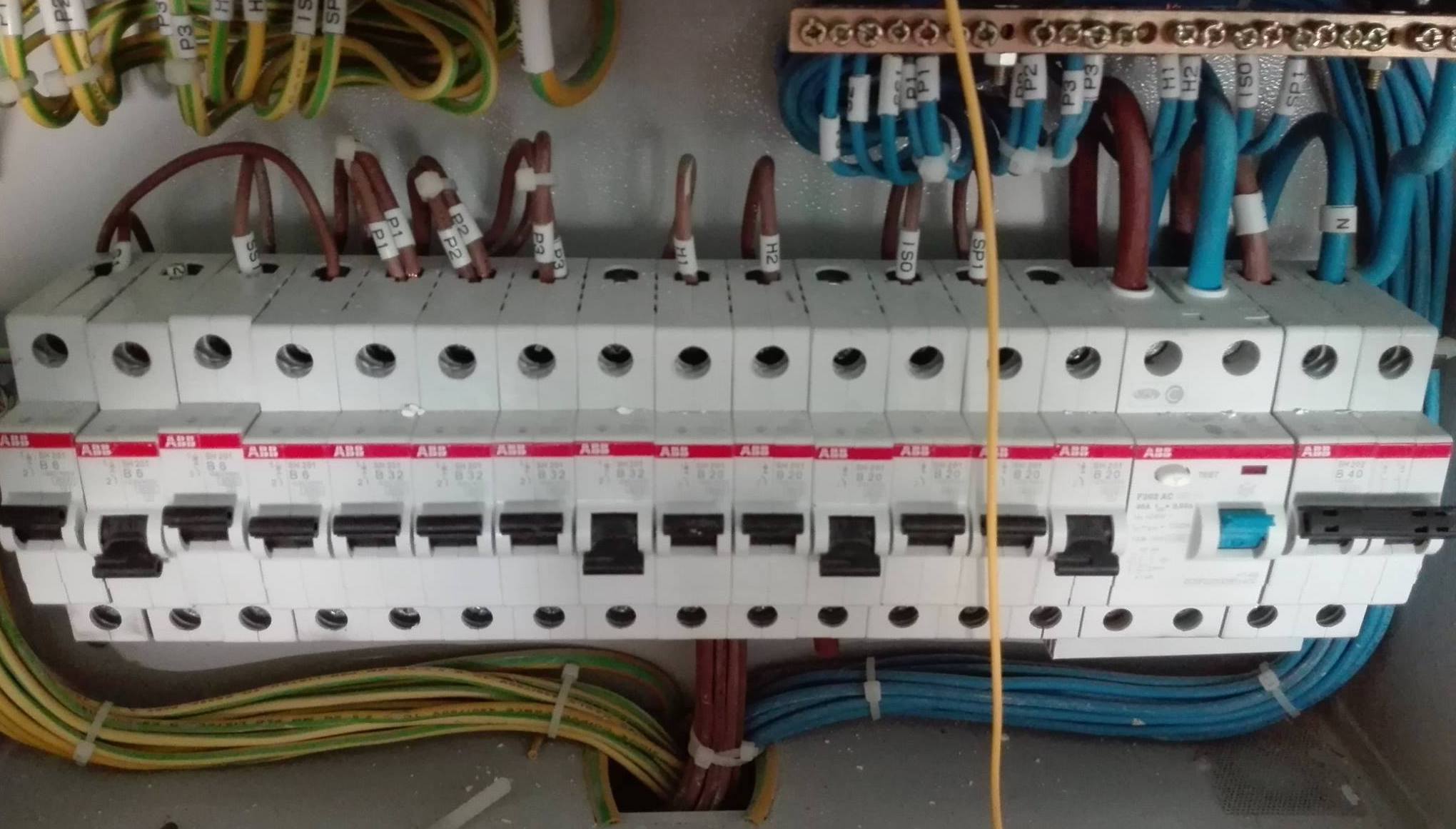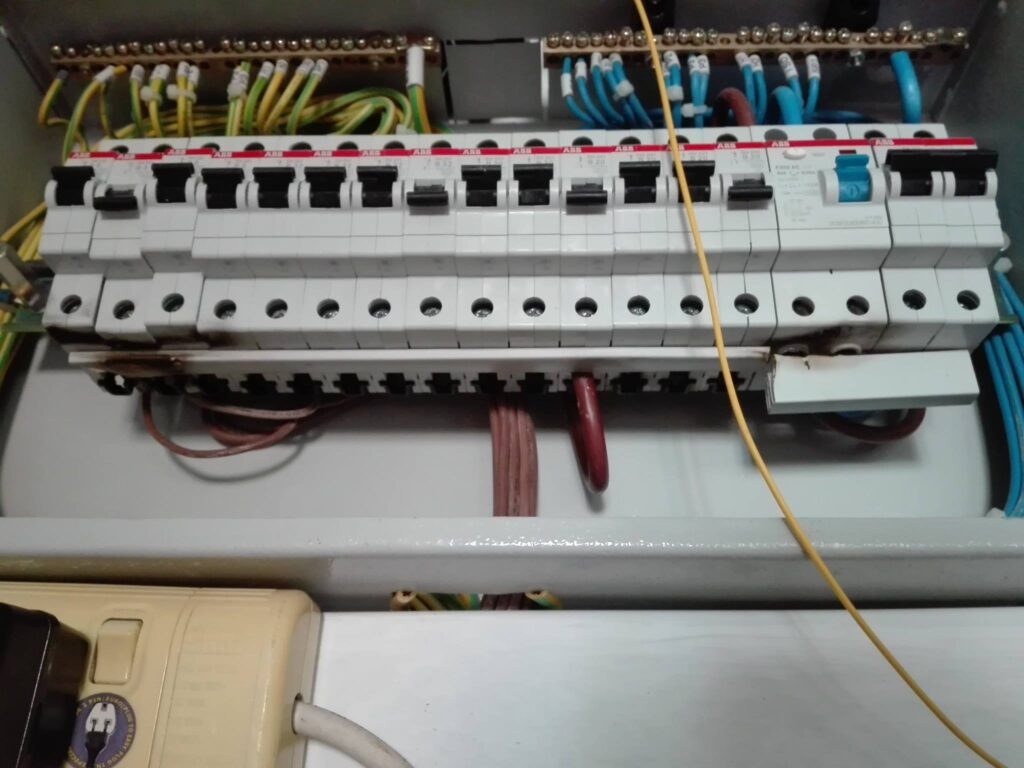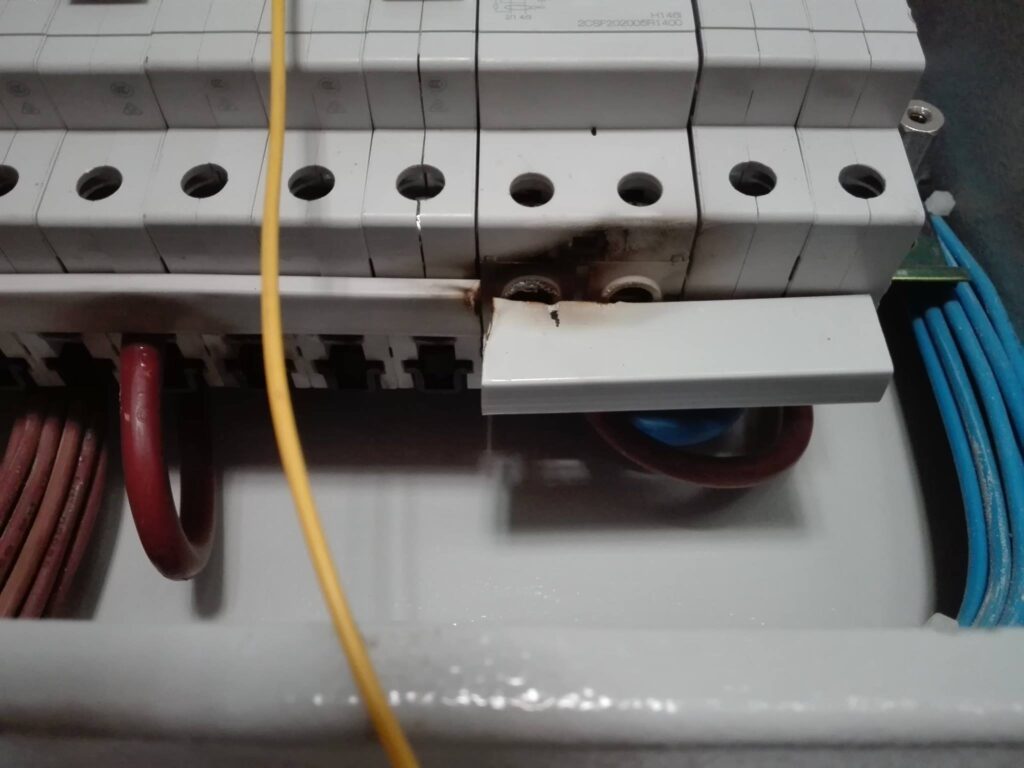
Tripped Circuit Breaker
Need professional help with your circuit breaker, DB Box, blown fuse etc?
Tripped Circuit Breaker – Causes, Signs & How to Reset
In Singapore homes, circuit breakers serve as crucial safety devices that protect electrical circuits from overloads and short circuits. They are the most important components of our Distribution Board (DB) Box or Electrical Panel.
These devices automatically interrupt the flow of electricity when they detect an abnormal condition, preventing potential electrical hazards such as fires, shocks, and equipment damage.
Why do our Circuit Breakers Trip
Tripped circuit breakers can occur due to various reasons, including:
- Overload: Overloading occurs when the electrical circuit is forced to carry more current than it can handle. This often happens when too many devices are plugged into the same circuit simultaneously, drawing excessive power.
- Short Circuit: A short circuit occurs when there is a low-resistance connection between two conductors, typically caused by faulty wiring or damaged appliances. This creates a sudden surge of electrical current, triggering the circuit breaker to trip.
- Ground Fault: A ground fault occurs when the hot wire comes into contact with a grounded surface, such as a metal outlet box or a water pipe. This can happen due to damaged insulation or faulty appliances, leading to a tripped circuit breaker.
- Old/Faulty Circuit Breakers: Circuit breakers degrade over time and may become less effective at detecting electrical faults. Old or faulty circuit breakers are more prone to tripping unexpectedly. Outdated circuit breakers can have worn connectors and may not trip when it should, which can cause a circuit to overload and start a fire.
- Poor Electrical Wiring: Faulty or deteriorating electrical wiring can increase the risk of circuit breaker trips. Loose connections, damaged insulation, and overloaded circuits are common issues associated with poor wiring.



Signs of a Tripped Circuit Breaker
Signs of a tripped circuit breaker include:
- Sudden loss of power to specific areas or appliances in the home.
- Audible clicking noise coming from the electrical panel.
- The position of the breaker switch moving to the middle or “off” position.

How to Reset a Tripped Circuit Breaker
- Identify the Tripped Breaker:
- Start by locating the electrical panel or distribution board in your home.
- This panel contains circuit breakers or fuses, each dedicated to a specific electrical circuit.
- Look for the breaker switch that is in the middle or “off” position.
- Turn Off Appliances:
- Before resetting the breaker, switch off or unplug any devices connected to the affected circuit.
- This prevents overloading the circuit when power is restored.
- Reset the Breaker:
- To reset a tripped circuit breaker, firmly push the switch to the “off” position.
- Then switch it back to the “on” position.
- You should hear a click as the breaker resets.
- Test the Circuit:
- After resetting the breaker, test the circuit by turning on one device at a time.
- Test all switches, power outlets, and appliances – ensure nothing is damaged and that power is fully restored to your house.
- If the breaker trips again immediately though, there may be an underlying issue such as a short circuit or faulty appliance.
- Investigate the Cause:
- If the circuit breaker continues to trip repeatedly, it indicates a potential problem that requires further investigation.
- Check for any damaged wiring, malfunctioning appliances, or signs of electrical faults.
- Remember, repeatedly resetting a circuit breaker could result in an arc flash or a fire.
- Seek Professional Help:
- If you are unable to identify or resolve the underlying cause of the tripped circuit breaker, it is advisable to seek assistance from a qualified electrician.
- Electricians can inspect the electrical system, diagnose the issue accurately, and make necessary repairs or replacements.
Leave the Dangerous Work to an Electrician
Resetting a tripped circuit breaker is a simple procedure that homeowners can perform to restore power to their electrical circuits. By understanding the common causes of circuit breaker trips and recognising the signs of a tripped breaker, you can effectively troubleshoot and address minor electrical issues in your homes.
For safety reasons, we highly recommend you seek professional assistance for more complicated or recurring issues. For example, if you find your circuit breaker trips again immediately after resetting it, it is time to call in the pros.
So if you need professional help with your DB Box or circuit breakers, whether repair, replacement, installations or upgrades, do consult our qualified electricians today!

Get In Touch
Contact us today for dependable solutions to all your plumbing and electrical needs.